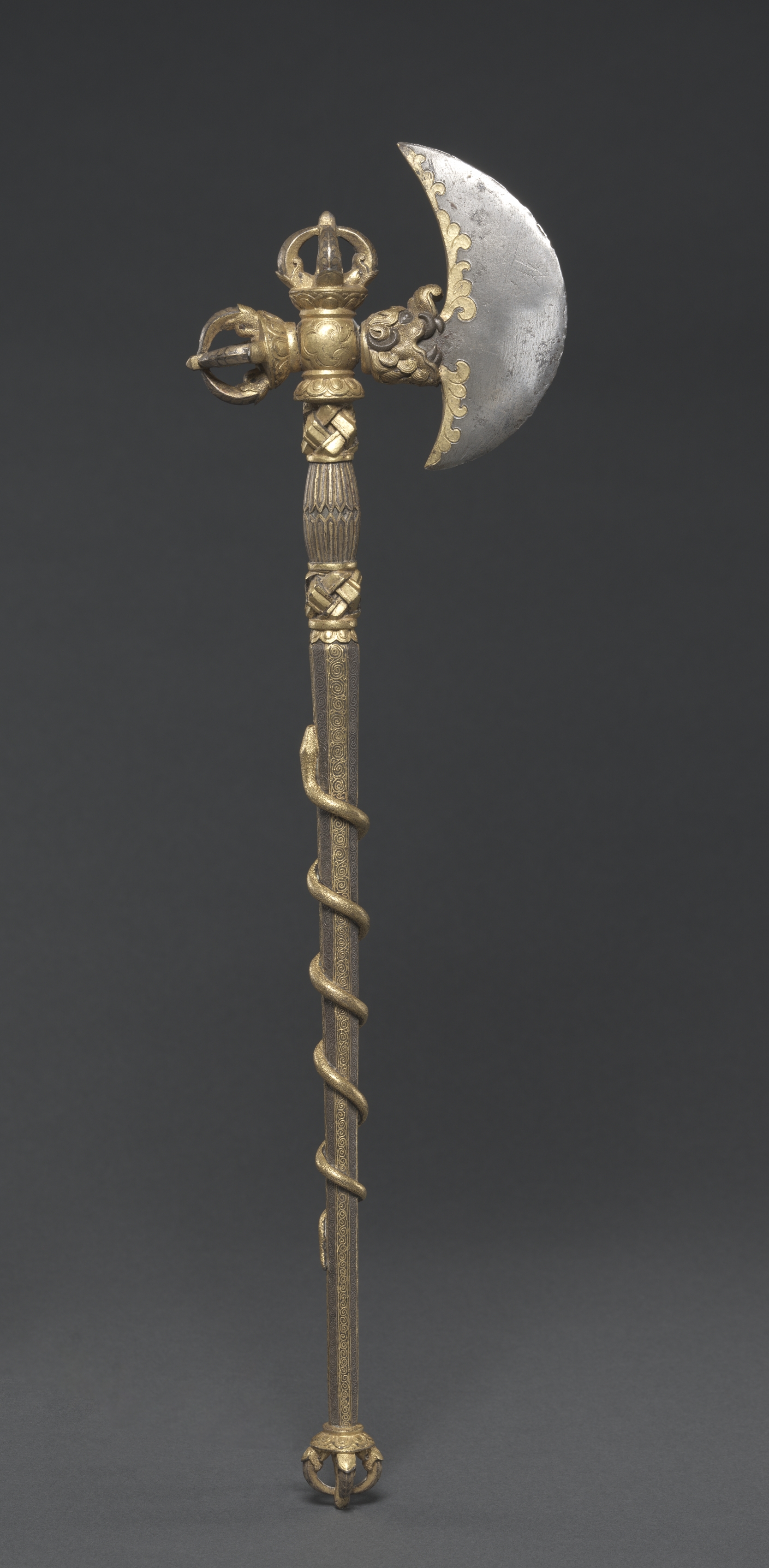The Cleveland Museum of Art
Collection Online as of April 19, 2024

Ritual Axe
c. 1407–1410
Location: 237 Himalayan
Description
Ceremonial weaponry was used in tantric rituals to combat obstacles to enlightenment, such as ignorance, delusions, and selfishness. In 1407, a high-ranking Tibetan monastic patriarch visited the emperor of the Ming dynasty, known as Yongle. The Yongle emperor presented him with a number of gifts, of which this ritual axe was probably a component, since the axe bears his identifying inscription in a cartouche. Imperial Chinese workmanship is noted in the lush rendering of the lion heads from which the blades emerge, the calligraphic serpentine forms, and the cloud motifs.- Huntington, John C., Dina Bangdel, and Robert A. F. Thurman. The Circle of Bliss: Buddhist Meditational Art. Chicago: Serindia Publications, 2003.
- Focus: Tantra in Buddhist Art. The Cleveland Museum of Art, Cleveland, OH (organizer) (May 5-September 15, 2013).The Cleveland Museum of Art (05/05/2013 - 09/15/2013); "Focus:Tantra in Buddhist Art"Defining Yongle: Imperial Art in Early Fifteenth-Century China. The Metropolitan Museum of Art, New York, NY (organizer) (April 1-July 10, 2005).Metropolitan Museum of Art (4/1/2005-7/10/2005): "Defining Yongle: Imperial Art in Fifteenth-Century China"The Circle of Bliss: Buddhist Meditational Art. Los Angeles County Museum of Art, Los Angeles, CA (organizer) (October 5, 2003-January 11, 2004); Columbus Museum of Art, Columbus, OH (February 8-May 9, 2004).Los Angeles County Museum of Art (10/5/2003 - 1/11/2004) and Columbus Museum of Art (2/8/2004 - 5/9/2004): "The Circle of Bliss: Buddhist Meditaional Art," exh. cat. no. 108, p. 366-367.
- {{cite web|title=Ritual Axe|url=false|author=|year=c. 1407–1410|access-date=19 April 2024|publisher=Cleveland Museum of Art}}
Source URL:
https://www.clevelandart.org/art/1978.9.1